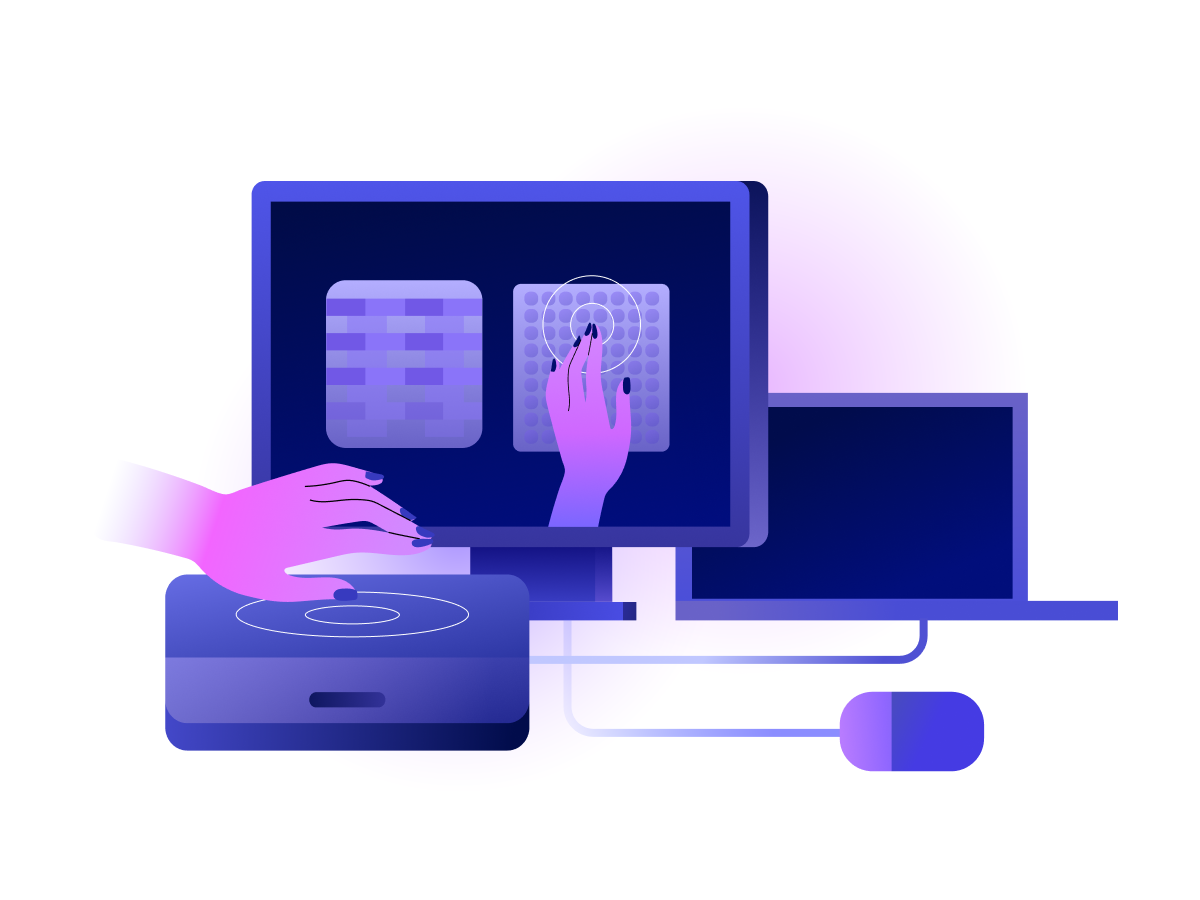
Don't want to miss a thing?
Commercializing technology: E-Textures success journey
Technology companies that want to succeed in a highly competitive market are constantly investing in research and development (R&D), which is vital for their future. However, the true triumph comes when the innovation born in the lab is successfully commercialized.
Here’s a story about how technology from a SoftServe partner accomplished the journey from the invention to the growth phase.
E-Textures: creating a highly unusual experience
Almost a decade ago, our partner―the UK-based Ultraleap―pioneered contactless haptic technology. It was a breakthrough in the world of haptics as the company introduced a brand-new type of human-machine interaction. The technology enabled users to control and manipulate devices in mid-air. Contactless haptic technology was first successfully commercialized in 2014, and has been continuously improved ever since.
In recent years, Ultraleap has partnered with The National Center for Scientific Research (CNRS) in France to evolve the technology. They worked together with the goal of enriching the sense of touch with the sense of texture. As a result, companies created a completely new experience of not only touching virtual objects, but also feeling their textures in mid-air. This is how E-Textures haptic technology emerged in 2020.
An array of ultrasound waves projects the digital texture of the surface or an object, so a user can feel the abstract sense of the texture associated with that object or as a natural texture. E-Textures technology can mimic different shapes, sizes, textures, and sensations in both two- or three-dimensional space (2D or 3D).
However revolutionary the invention, finding the best ways of applying novel E-Textures technology and commercializing it became a challenge. SoftServe R&D has extensive experience in building use cases and running market validation campaigns. Ultraleap and CNRS approached SoftServe to join the effort to move the technology from the patent to real-life.

E-Textures commercialization path
For technology commercialization, the SoftServe R&D team has employed Goldsmith’s Technology Commercialization model that guides the team through all the necessary steps to move technology from the invention to the growth phase.

SoftServe’s work involved five specific stages within this model.
Technology analysis
The very first step for the SoftServe R&D team was to perform technology analysis, knowledge transfer, and technology testing. The main goal was to learn as much as possible about the technical capabilities, limitations, and features of the technology.
Once completed, the team obtained a good understanding of the technology to be commercialized, which became vital for defining a further commercialization path for E-Textures.
Market research
The R&D team performed extensive research in two main directions—competitors’ analysis and market study.
During the in-depth competitor analysis, the team identified direct and indirect competitors for E-Textures and created the competitors’ landscape by identifying their profiles, target markets, and business strategies. The team also learned the strengths, weaknesses, and unique features of the potential market rivals, as well as the technology they use.
This detailed market study provided greater insight into the current market trends, market drivers and barriers, market size, and segments. This step also helped identify market needs and opportunities and became a basis for matching the capabilities of E-Textures with those needs.
Market validation
These previous steps allowed the team to prepare the ground for crystalizing a value proposition.
It is mission-critical to work with multiple tracks to mitigate the risk of commercialization effort failure. Therefore, the team began by identifying the domains for E-Textures. Market research results were the basis for selecting and prioritizing the industries where the technology can be successfully applied.
After that, the R&D team generated the most interesting and promising use cases. They invited the partners—Ultraleap and CNRS—including technology and business leaders, industry, and product marketing experts to collect and structure the ideas. Following the hypotheses validation series, the team selected the three most promising use cases: experiences for the museum and exhibition industry, solutions for rehabilitation and psychotherapy, and immersive experiences for the luxury retail market. For each case, the team crafted an application scenario, target audience groups, product messaging, key benefits, advantages, and the pricing model.
To validate the suggested value proposition, hypotheses, and assumptions, already pre-validated with the industry experts, a product manager, and the marketing team built landing pages and conducted paid marketing campaigns on social media. The marketing team has followed the campaign dynamics and fine-tuned the target audience and messaging.
Venture assessment and economic feasibility
While performing the market validation, the R&D product manager and the financial advisor worked together on the venture assessment. This process included exploring alternative and/or additional ways to commercialize the E-Textures technology, such as licensing, opportunities for joint venture creation, and analysis of various business models. The team also discovered potential partners for each commercialization type, necessary resources, and financial simulation of potential profits. As a result, by the time the marketing qualified leads started to flow in for E-Textures, the team had a good understanding of how to structure collaboration with potential clients.
Financial modeling for each commercialization type or business model helped determine potential revenue, compare the profit-making plans, and understand which performs best.
Reaping the benefit
A well-organized marketing campaign has attracted interest in all three industries, having brought several leads for one of them. The SoftServe team’s hypotheses have been confirmed—the use case for luxury retail generated the most leads. SoftServe has engaged a prominent luxury brand to pilot the E-Textures technology solution and is currently working with Ultraleap, and CNRS to launch it.
To succeed, SoftServe applied a structured commercialization path for E-Textures technology. The team used a diversification approach, targeting multiple industries, use cases, and business models, ensuring positive outcomes even if some options fail. The clearly established process has facilitated fast and cost-effective journey to technology commercialization.
Having extensive experience in building business cases and running market validation campaigns, SoftServe can assist you on this journey. Let’s talk about how to commercialize your technology!

